
|

|
|
Home Site Search Contact Us Subscribe
|
|
|
Best Architecture Books of 2009 10 crucial volumes from the classic to the iconoclastic By Norman Weinstein December 9, 2009 Steven Holl, Urbanisms: Working With Doubt (Princeton Architectural Press, $55). This is a dazzling model of an architect’s reflections upon his own work that generates open-ended questions of first-order. While disclosing the musical and poetic programs actualized in his designs, Holl articulates his sense of practical constraints that are integral to 21st-century urbanism. Annotating projects in the U.S., Europe, and Asia during the past two decades, an astute reader might want to begin the book in the middle with Holl’s Chinese architecture. Buildings like the Horizontal Skyscraper and Linked Hybrid cast long shadows in terms of reformulating visions of high-density urban design. Probing, adventuresome, unsettling – and yet optimistic.
Ken Allinson, London’s Contemporary Architecture, Fifth Edition: An Explorer’s Guide (Architectural Press, $28.95). Should new architectural tourist guides be as welcome as self-help diet or sex books? Many can be tossed into that rank category for the simple reason that authoritatively proclaimed opinion substitutes for vigorous thinking. Allinson is something else. He’s an architect and writer with an acute eye for telling details who maintains a laid-back attitude toward his own (quite well-reasoned) judgments. So while savaging Bishops Square, a new Norman Foster retail space, Allinson still provokes me to take a look for myself. Also unusual for this genre: Allinson has you consider the political and financial exigencies shaping various structures, something most tourist guides assume out-of-towners wouldn’t be interested in considering.
Antoine Vigne and Betty Bone, Le Corbusier: In His Own Words (Papadakis, $19.95). Corbu liked to portray himself as child-like. So why not take a batch of his most captivating quotes and package them as a children’s book? This could have been a disastrous rip-off since Corbu’s salient sayings aren’t the normal intellectual fare most kids digest in a gulp. What makes this book an enthralling introduction to Le Corbusier for children of all ages are the visionary illustrations by Betty Bone. In a large format, her joyfully colorful images in a variety of styles, ranging from Art-Deco to Futurist, intensify the dramatic impact of the quotes, positing one form of architectural thinking as child’s play.
Jerry Yudelson, Greening Existing Buildings (McGraw Hill, $79.95). Greening existing buildings in the current economic climate can be a hard-sell. By carefully citing 25 case studies of successful projects (like replacing windows in the Empire State building to improve energy efficiency), Yudelson offers a compelling business case in the language of LEED. A reliable compendium of best design practices tempered by market realism.
Carlos Castanheira, Álvaro Siza: The Function of Beauty (Phaidon, $90). A coffee-table tribute that may be the definitive book on the sadly underrated Portuguese genius. Acutely sensitive to site, and relentlessly experimental in the vein of an unstoppable Modernism, Siza is an architect for the ages. Impeccable photography throughout, particularly of his masterpiece, the Ibere Camargo Foundation Museum – a building of the same noble majesty as the Kimball or Guggenheim. Siza contributes some spare (though helpful) commentary. Fernando Guerra’s photography fills in the gaps and inspires the quick purchase of a ticket to Lisbon.
Will Jones, Unbuilt Masterworks of the 21st Century (Thames & Hudson, $65). The architectural book equivalent of a book of failed utopian community visions, this massive and generously illustrated compendium of 100 unbuilt projects is an entertaining idea-generator. Starchitects abound (Predock, Hadid, Libeskind, Safdie). Buildings are grouped functionally, perhaps the book’s sole failing. Just imagine if these unbuilt masterpieces had been categorized under the headings of “Competition Losers” or “Excessively Spendy.” UNStudio’s design for a race track, looking like a loopy Pop Art open-faced Swiss cheese sandwich, may not have been actualized due to the paucity of sculptural imagination among NASCAR-type investors.
Vincente Guallart, Geologics: Geography Information Architecture (Actar, $47). The best books on architectural theory dissolve hardening of the categories, a commonplace disorder suffered by the academicians who practice it. Guallart’s is one of the finest because of how effortlessly he pries apart old credos regarding supposed irreconcilable differences between Nature and high-tech. Best of all, he creates an original and practical vocabulary for thinking through designs to reconcile these seeming contraries. An example is the word “rurban” referring to designed places of transition between city and country, making discussing architecture of flowing energies a tad more inviting.
Philip Jodidio, Calatrava: Complete Works 1979-2009 (Taschen, $29.95). Confession: The text by Jodidio is casual and cursory. The real deal involves the quality of photography integrally linked to Calatrava’s water colors and free sketches (generally dissed by critics attending The Met and MoMA shows of architect as artist). Whatever one thinks of his works on paper, the sketches (think of Gehry’s) and water colors (contemplate Holl’s) set up a counterpoint deepening the creative process. What happens to the imagination of an engineer-architect bent on precision while executing a splashy sketch? In the case of the Milwaukee Art Museum, a bird-like scribble takes flight memorably – yet finds its perfect ground.
Barry Bergdoll and Leah Dickerman, editors, Bauhaus 1919-1933: Workshops for Modernity (The Museum of Modern Art, New York, $75). Love it or hate it, architectural practice in our time is still impacted by the discoveries made by Bauhaus pioneers eight decades ago. In this penultimate collection of Bauhaus arts, crafts, and architecture, with hundreds of stunning reproductions and consistently informative commentary, any notion of the Bauhaus as a monolithic school promoting a single artistic agenda is finally erased. While covering familiar turf to anyone knowing the careers of Gropius and Mies, the cross-resonances between architectural study and painting classes (taught by Kandinsky and Klee) open new avenues for present-day architectural research and practice.
Isabel Kuhl and Klaus Reichold, 50 Sculptures You Should Know (Prestel, $19.95). Think a compact overview of the history of sculpture hardly qualifies as a great book for architects? Maybe you need to go back to school – back – but only if you can find an architecture school as multidisciplinary and free-thinking as the Bauhaus. Here’s a quick distillation: the sculpted women-columns on the ancient Erectheion temple in Athens, St. Bernward’s doors at the Hildesheim Cathedral, Ghiberti’s “Gates of Paradise” bronze doors in Florence, the Statue of Liberty, and an Alexander Calder’s mobiles. An entertaining and handsomely illustrated reference and quick-read between clients.
Norman Weinstein writes about architecture and design for Architectural Record and The Christian Science Monitor, and is the author of the monthly “Words That Build” – an exclusive series on ArchNewsNow.com focusing on the overlooked foundations of architecture: oral and written communication. He consults with architects and engineers interested in communicating more profitably. You can reach him at nweinste@mindspring.com.
Other books reviewed by Weinstein:
Op-Ed: Life After Ada: Reassessing the Utility of
Architectural Criticism
Book Review: "Gunnar Birkerts: Metaphoric Modernist" by Sven Birkerts and Martin Schwartz A major architect in the history of Modernism finally receives recognition – and sundry asides about why Modernism never exited.
Book Review:
"Urban Design for an Urban Century: Placemaking for People," by Lance
Jay Brown, David Dixon, and Oliver Gillham
Book Review:
"Everything Must Move: 15 Years at Rice School of Architecture 1994-2009"
Book Review: A Subversive Book Every Architect Needs:
"Architect's Essentials of Negotiation" by Ava J. Abramowitz
Book Review: A Perspective from One Elevation: "Conversations With Frank Gehry" by Barbara Isenberg Gehry's conversations offer portraits of an astute listener as well as talker, an architect as aware of his flaws and limitations as of his virtues.
Best Architecture Books of 2008
Book Review: You've Got to Draw the Line Somewhere A review of Drafting Culture: a Social History of Architectural Graphic Standards by George Barnett Johnston
Book Review: "NeoHooDoo: Art for a Forgotten Faith," edited by Franklin Sirmans Sharpen your pencils - and get ready to do a NeoHooDoo shimmy
|
(click on pictures to enlarge)  “Urbanisms: Working With Doubt” by Steven Holl  “London’s Contemporary Architecture, Fifth Edition: An Explorer’s Guide” by Ken Allinson 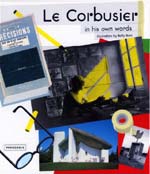 “Le Corbusier: In His Own Words” by Antoine Vigne and Betty Bone 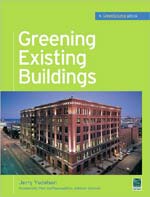 “Greening Existing Buildings” by Jerry Yudelson 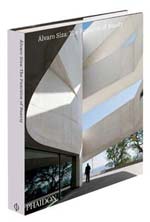 “Alvaro Siza: The Function of Beauty” by Carlos Castanheira; photography by Fernando Guerra 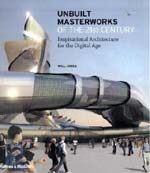 “Unbuilt Masterworks of the 21st Century” by Will Jones  “Geologics: Geography Information Architecture” by Vincente Guallart 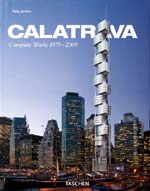 “Calatrava: Complete Works 1979-2009” by Philip Jodidio 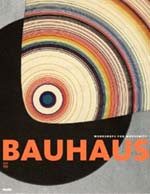 “Bauhaus 1919-1933: Workshops for Modernity”; Barry Bergdoll and Leah Dickerman, editors 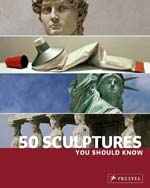 “50 Sculptures You Should Know” by Isabel Kuhl and Klaus Reichold |
© 2009 ArchNewsNow.com